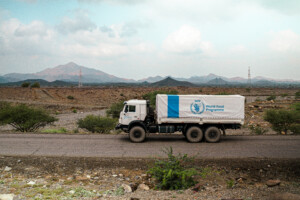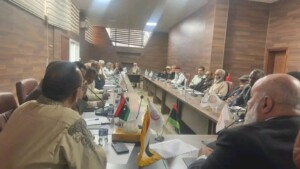Sudan OCHA bulletin 5: People continue to flee Jebel Marra
People continue to flee their homes in the Jebel Marra area -that straddles North, Central and South Darfur states- and take refuge in North and Central Darfur as fighting between government forces and an armed movement continues.
People continue to flee their homes in the Jebel Marra area -that straddles North, Central and South Darfur states- and take refuge in North and Central Darfur as fighting between government forces and an armed movement continues.
The UN Office for the Coordination of Humanitarian Affairs (OCHA) in Sudan reports in its latest weekly bulletin that as of 31 January, it is estimated that 44,700 people (31,000 in North Darfur and 13,700 in Central Darfur) have been displaced due to the attacks which started on 15 January.
North Darfur
In North Darfur's Kabkabiya locality, Unamid estimates that 21,400 people have taken refuge near their team site in Sortony by 30 January. According to the newly displaced, they fled the villages of Tui, Korambe, Samra, Burgukiry, Bersi, Sura, Birgel, Kaguro, Fatah and Niortolo.

The World Food Programme (WFP), the Sudanese Kabkabiya Smallholder Charitable Societ, and Anhar for Peace Development Organisation, with support from the UN Children’s Agency (Unicef) provided initial assistance.
Aid organisations continue to plan for response activities. The World Health Organization (WHO), the North Darfur Ministry of Health, Unicef, and the UN Population Fund will send medical supplies and medicine to Sortony.The supplies will be sent from the state capital of El Fasher to Kabkabiya town. WFP is planning to conduct an emergency general food distribution as soon as the verification exercise is completed.
According to a head count exercise carried out by the International Organization for Migration (IOM) in Tawila locality, an estimated 9,200 people from Jebel Marra arrived in the Rwanda and Argo camps. They reportedly came from villages in the eastern and western parts of Jebel Marra and from Jebel Si. The local authorities have allocated a new site for them, about six kilometres west of Rwanda camp.
While the exact numbers of new displaced are yet to be verified, international and national aid organisations have started responding to their humanitarian needs.

Central Darfur
People fleeing the violence in the Jebel Marra area also continue to arrive in Central Darfur. A total estimated 13,700 displaced people have reportedly arrived in the state. However, these figures are yet to be verified.
In Boori and Wadi Boori villages, community leaders have reported the arrival of 10,142 people from Golo town and surrounding villages, who are in urgent need of aid. There are no humanitarian organisations in the area, and the displaced are expected to move to Nierteti and Guldo in the coming days.
Aid organisations in Central Darfur have not been able to assess the needs of the displaced in rural areas due to ongoing conflict and the current security situation. Meanwhile, the UN is advocating for humanitarian access to ascertain the exact humanitarian situation of these newly displaced and what response is required.
Displaced and refugee registration in South Kordofan
On 27 January, IOM and the government’s Humanitarian Aid Commission (HAC) started the registration of displaced and refugees in South Kordofan’s eastern corridor, which runs from El Abbasiya to El Leri localities. The exercise is expected to be completed on 19 March.
As there are no camps for the displaced in South Kordofan, it is logistically more difficult to reach and assist displaced people as they are scattered throughout the state, with many of them living with host communities, OCHA reports.
In February 2015, an estimated 88,000 Nuba displaced and 9,000 refugees from South Sudan were confirmed in South Kordofan’s eastern corridor.
Humanitarian response to people in need in West Kordofan
In West Kordofan, the WFP distributed one-month food rations to 6,079 South Sudanese refugees in the Kharasana refugee site on 26 January. The number of refugees in the site has recently risen from 4,049 to 6,079, owing to the arrival of new refugees.
Kharasana is mainly a transit point that refugees use on their way to White Nile State or other parts of the country.
Concerns over new hostilities in Blue Nile
Various reports from the media indicate that hostilities between government security forces and the Sudan People’s Liberation Movement-North (SPLM-N) have taken place in some parts of Blue Nile state in recent weeks.
While there are no reports of any civilian casualties or displacement so far, humanitarian organisations are concerned about any possible protection and humanitarian needs of civilians in the areas affected, the OCHA bulletin reads.
The Blue Nile state authorities have communicated to UN agencies and other international humanitarian organisations that they will facilitate a comprehensive state-wide inter-agency needs assessment mission during the first half of February.
Read the full OCHA bulletin here











 and then
and then